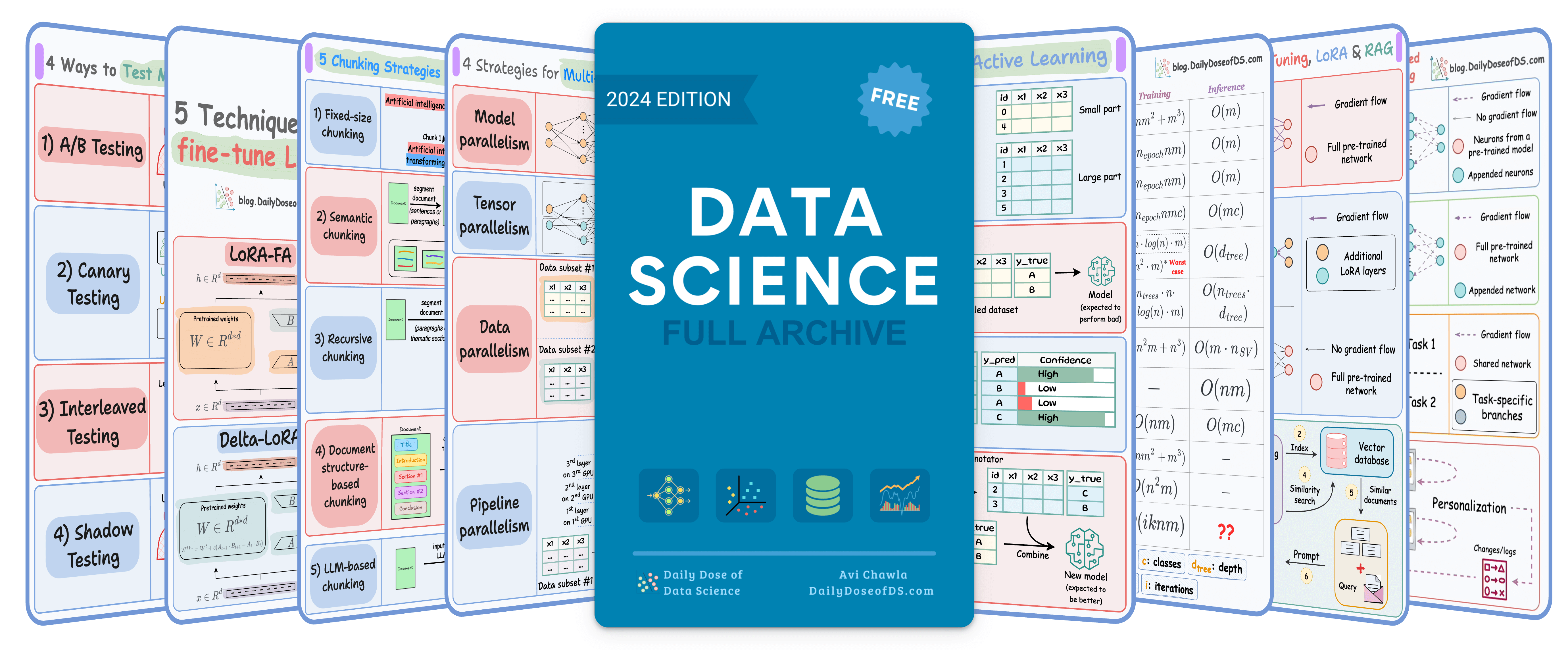

TODAY'S ISSUE
TODAY’S DAILY DOSE OF DATA SCIENCE
MCP-powered Synthetic Data Generator
Today, we're building an MCP server that every data scientist will love to have.
It’s an MCP server that can generate any type of synthetic dataset.
Synthetic dataset is important because it gives us more data from existing samples, especially when real-world data is limited, imbalanced, or sensitive.
Here’s our tech stack:
- Cursor as the MCP host.
- SDV to generate realistic tabular synthetic data.
SDV is a Python library that uses ML to create synthetic data resembling real-world patterns. The process involves training a model, sampling data, and validating against the original.
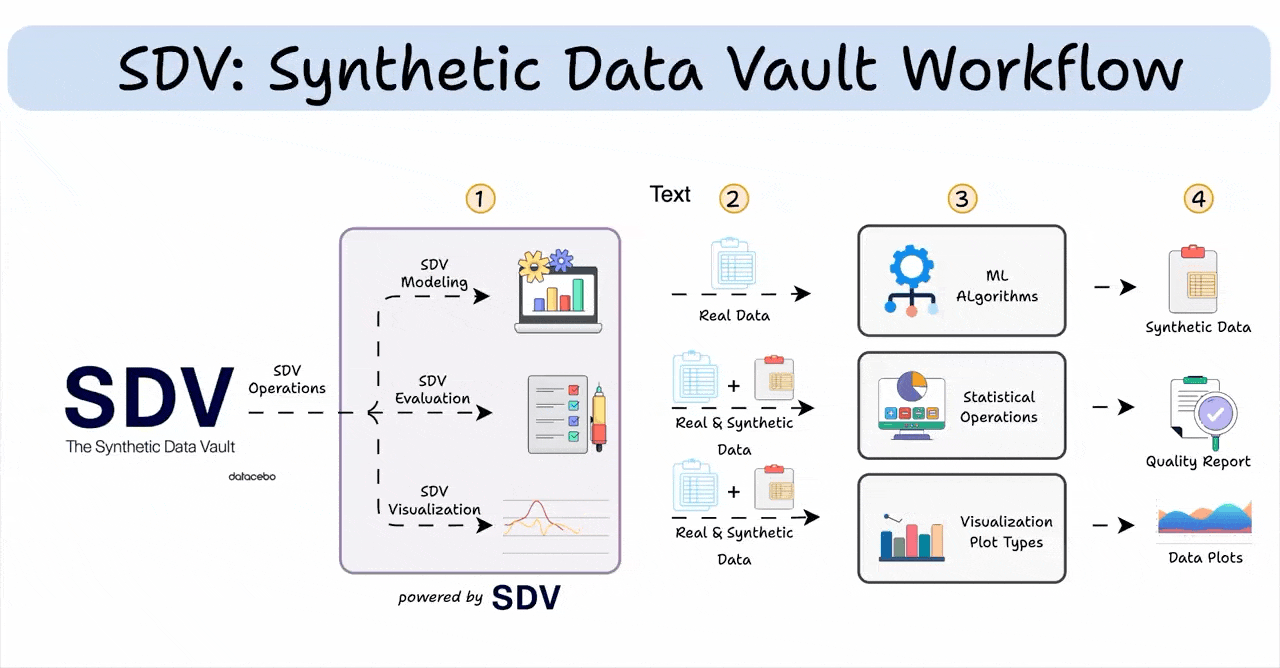
Here’s a system overview of what we are building today:
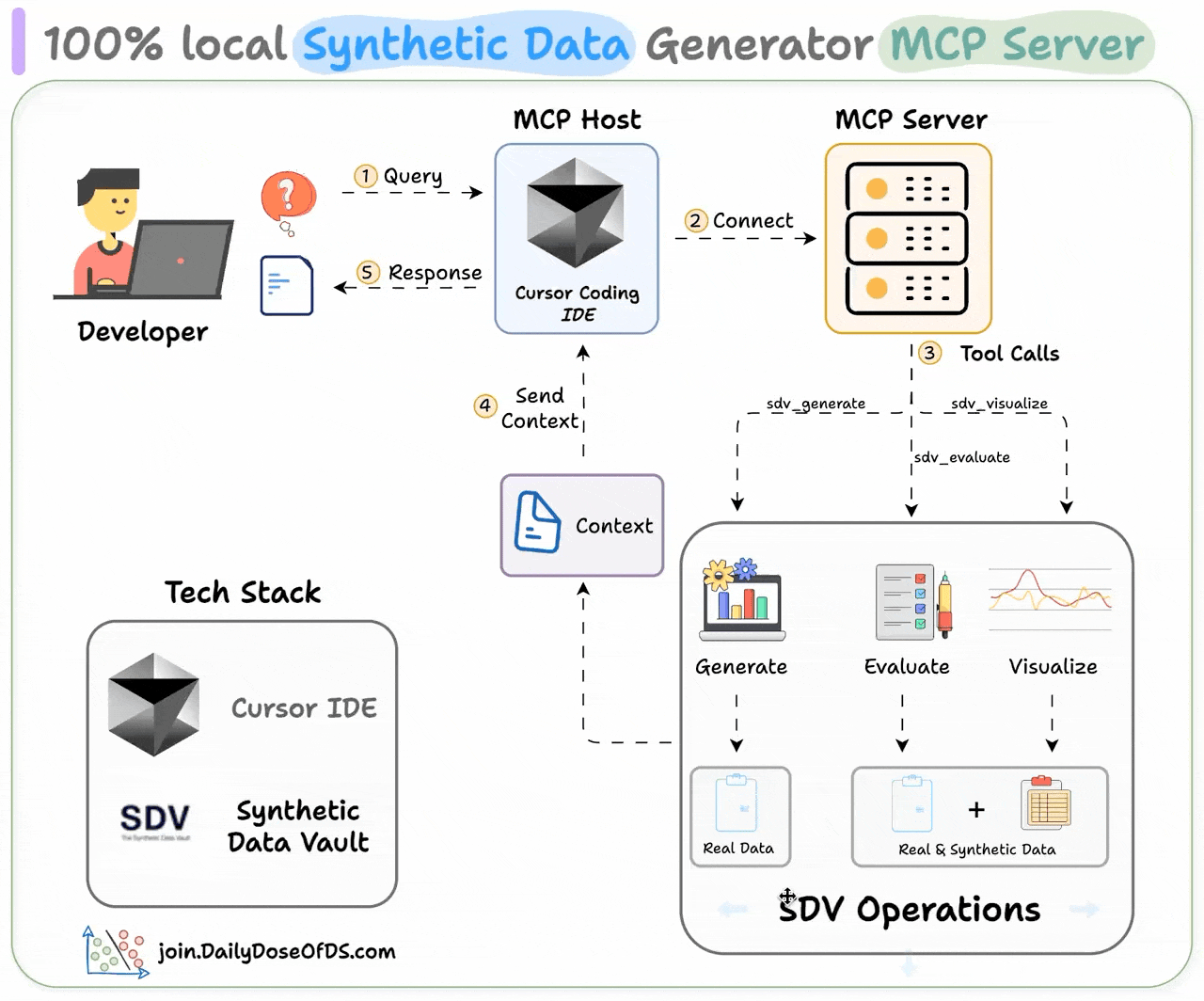
- User submits a query
- Agent connects to the MCP server to find tools
- Agent uses the appropriate tool based on the query
- Returns response on synthetic data creation, eval, or visualization
If you prefer watching, here's a full walkthrough:
The GitHub repo with the code is linked later in the issue.
Code walkthrough
Synthetic Data Generator MCP implementation
Let’s implement this!
Our MCP server will have three tools:
Tool 1) SDV Generate Tool
This tool creates synthetic data from real data using the SDV Synthesizer.
SDV offers a variety of synthesizers, each utilizing different algorithms to produce synthetic data.
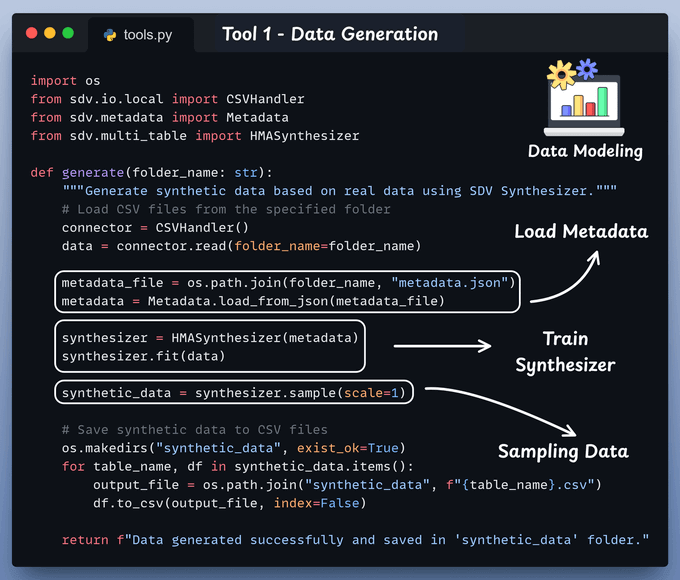
Tool 2) SDV Evaluate Tool
This tool evaluates the quality of synthetic data in comparison to real data.
We will assess statistical similarity to determine which real data patterns are captured by the synthetic data.
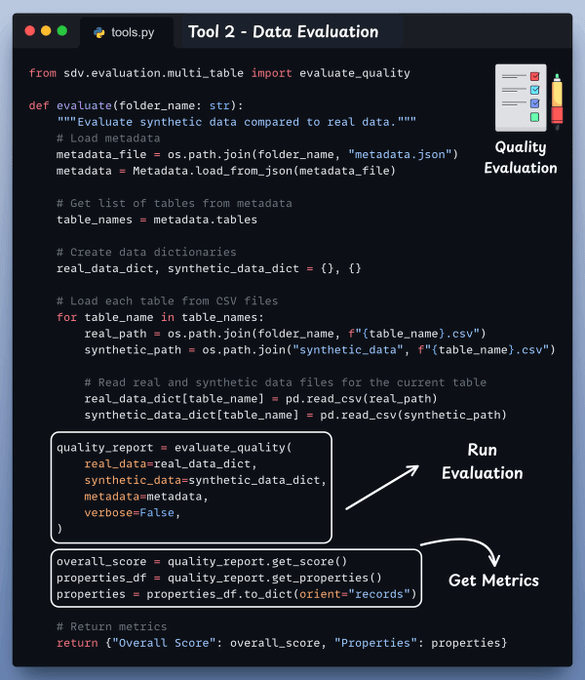
Tool 3) SDV Visualize Tool
This tool generates a visualization to compare real and synthetic data for a specific column.
Use this function to visualize a real column alongside its corresponding synthetic column.
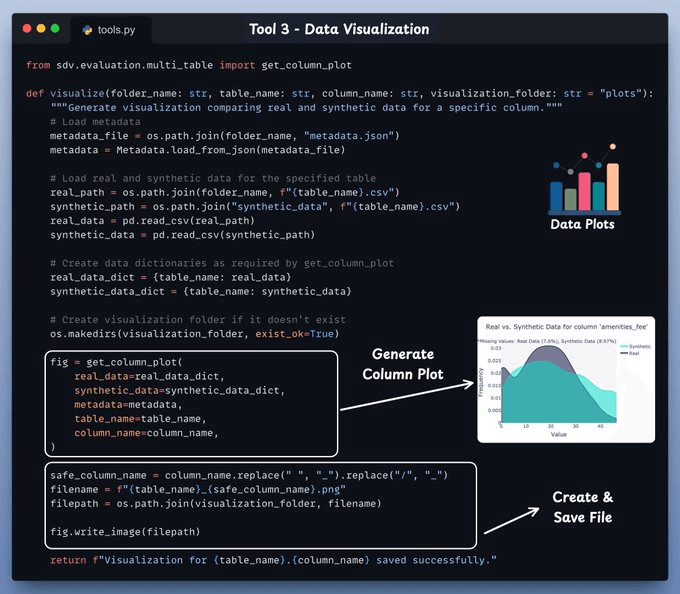
Set up the server
With the tools ready, we implement the server:

Above, we have a server script that exposes the tool using the MCP library by decorating the functions using the tool decorator.
With tools and server ready, let’s integrate it with our Cursor IDE!
Go to: File → Preferences → Cursor Settings → MCP → Add new global MCP server.
In the JSON file, add what's shown below:
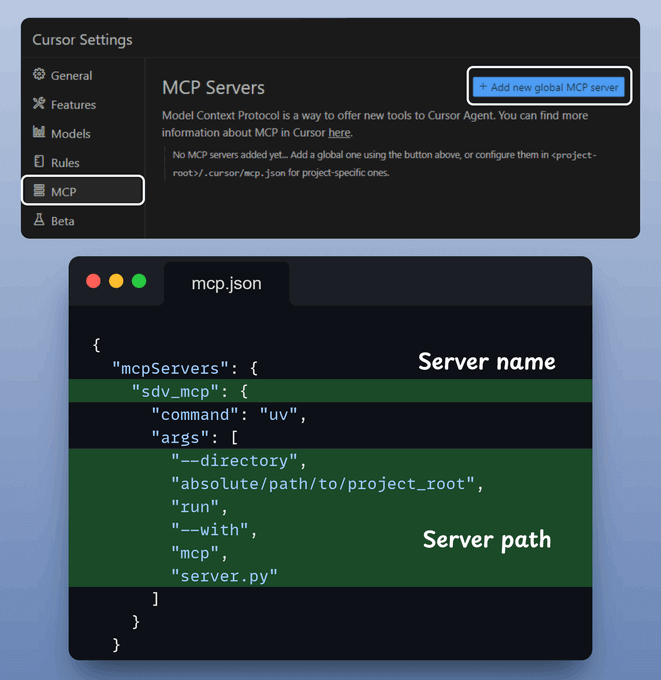
Done!
Your synthetic data generator MCP server is live and connected to Cursor!
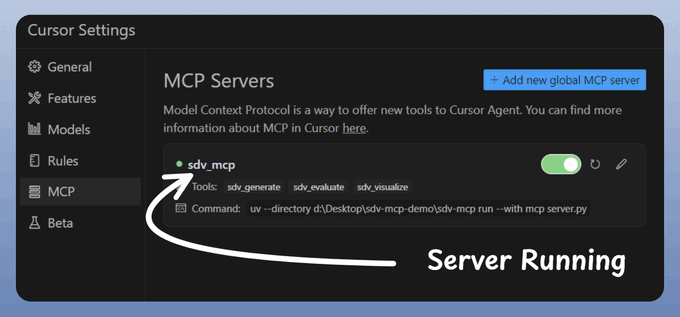
We open a new chat in Cursor and ask it to generate a synthetic dataset for the available seed dataset as follows:
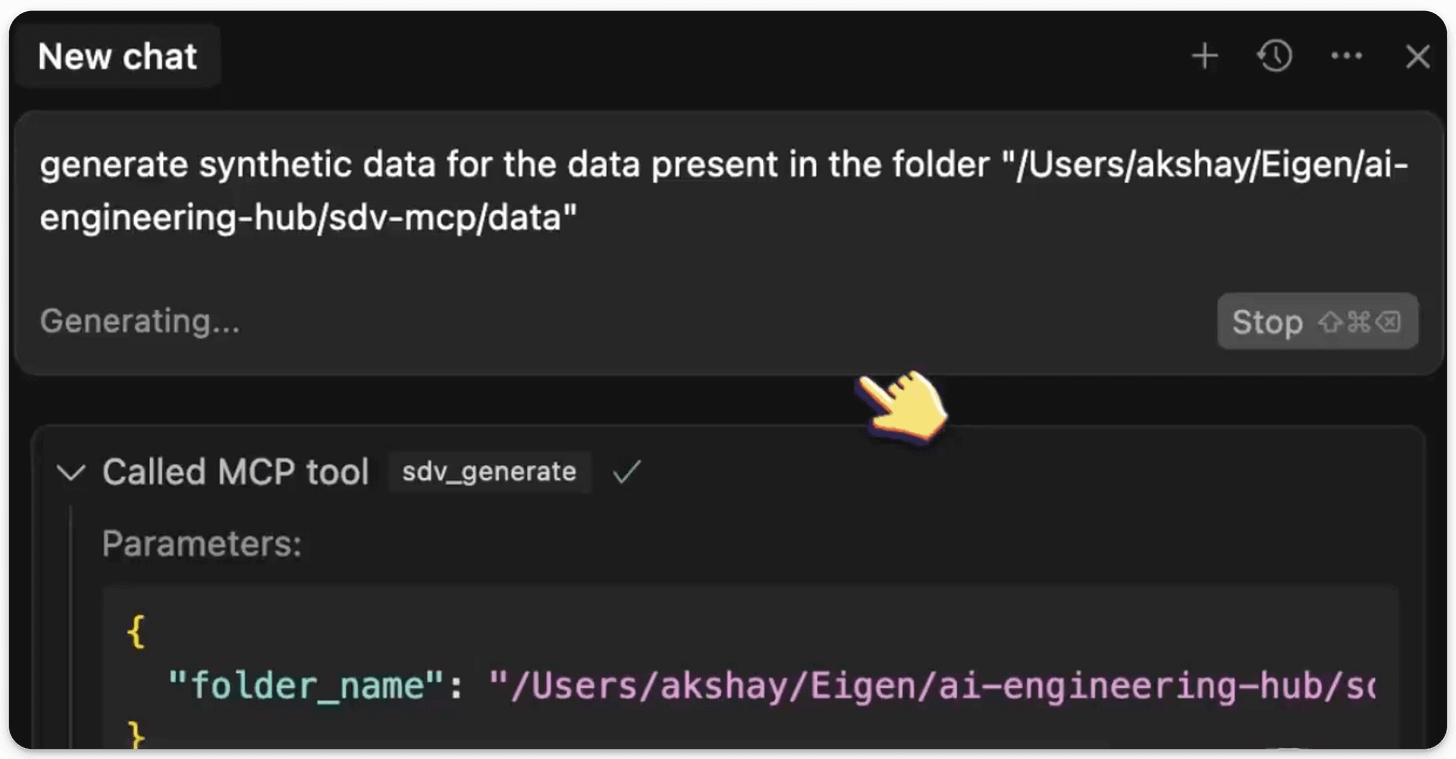
Here’s a sample of the synthetic dataset generated using the original seed data:
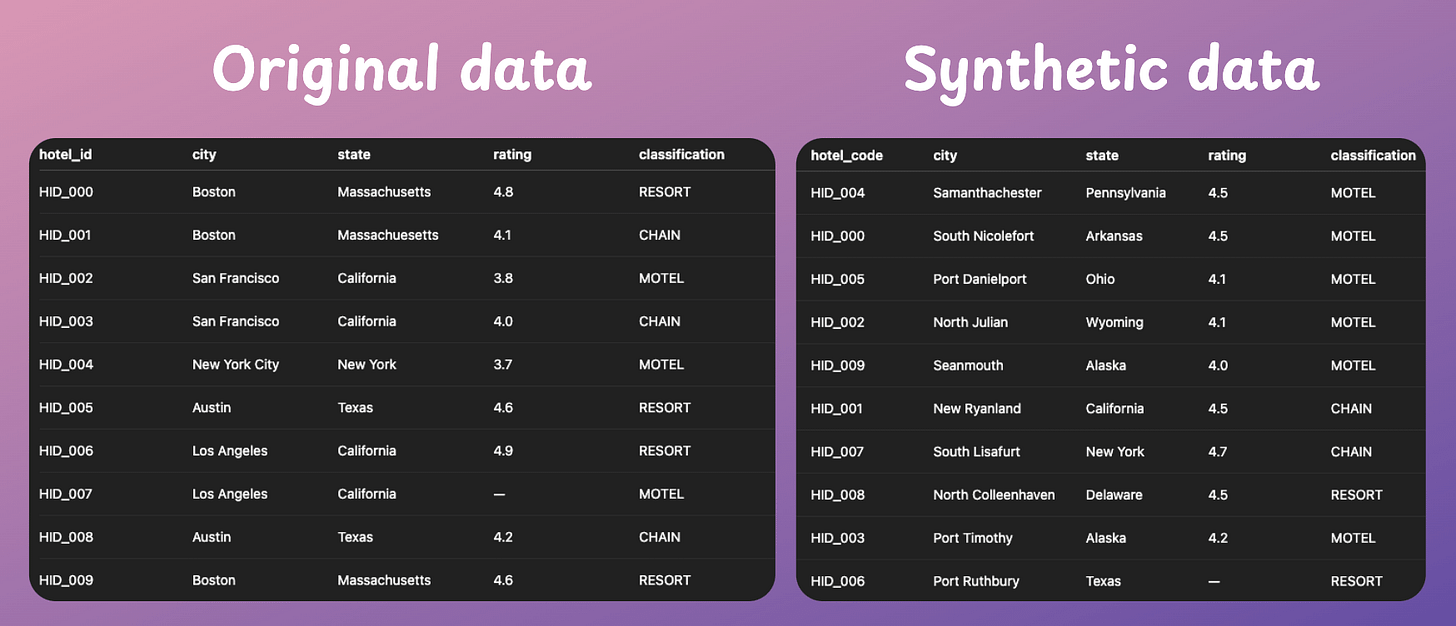
We can also use the evaluate MCP tool defined earlier to get a quantitative evaluation report using SDV.
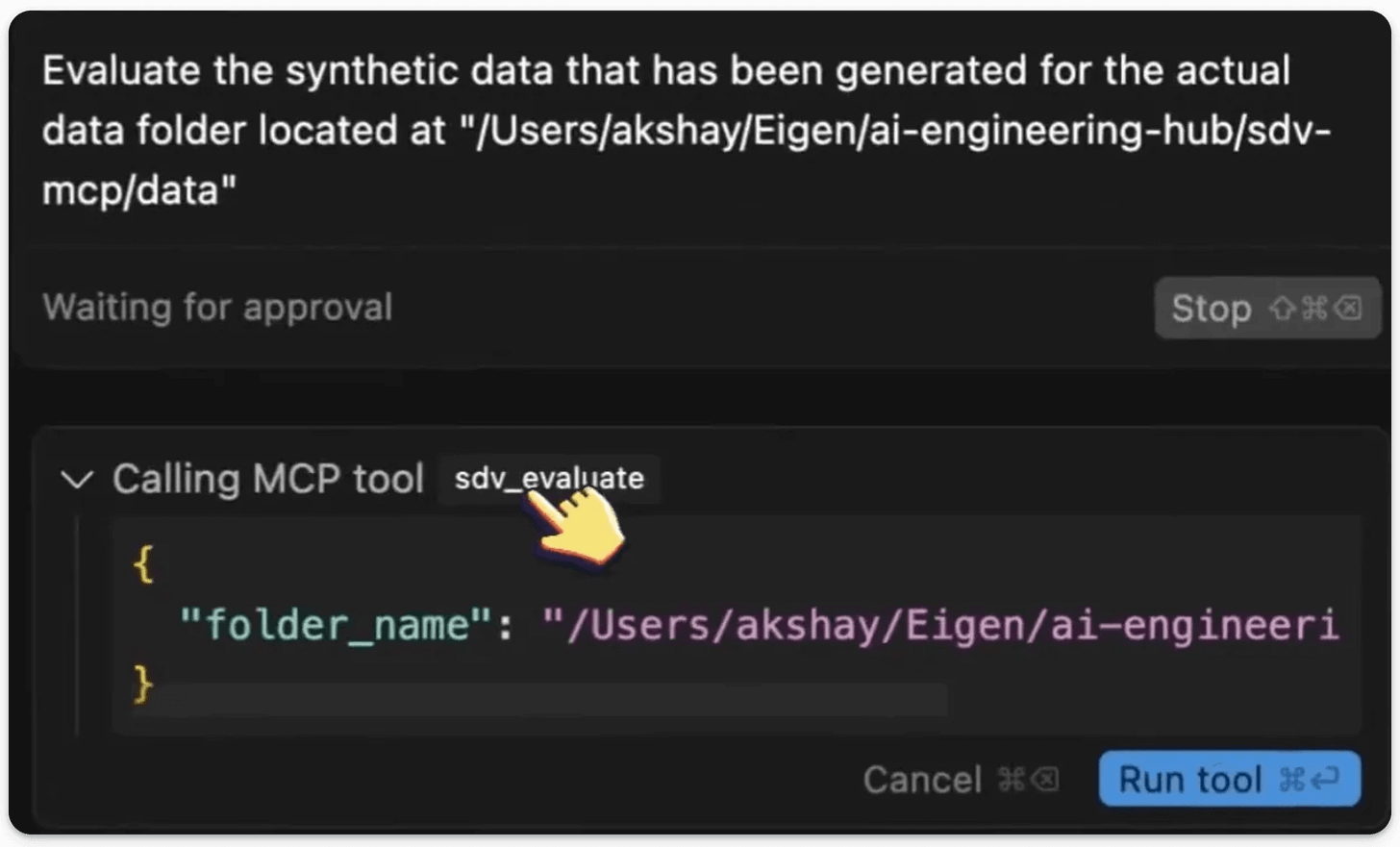
This produces a thorough evaluation report with a remark that the generated data resembles the original dataset:
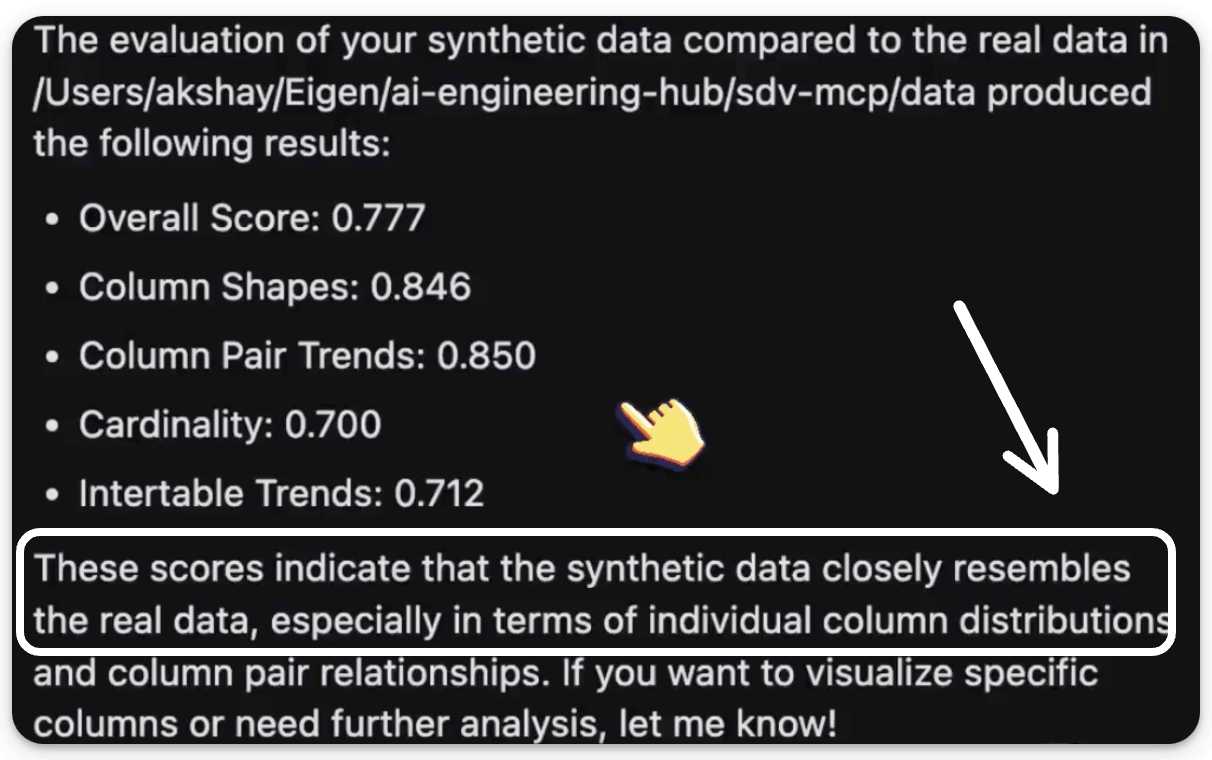
Finally, we can also use the visualization tool to generate a visualization comparing real and synthetic data for a specific column:
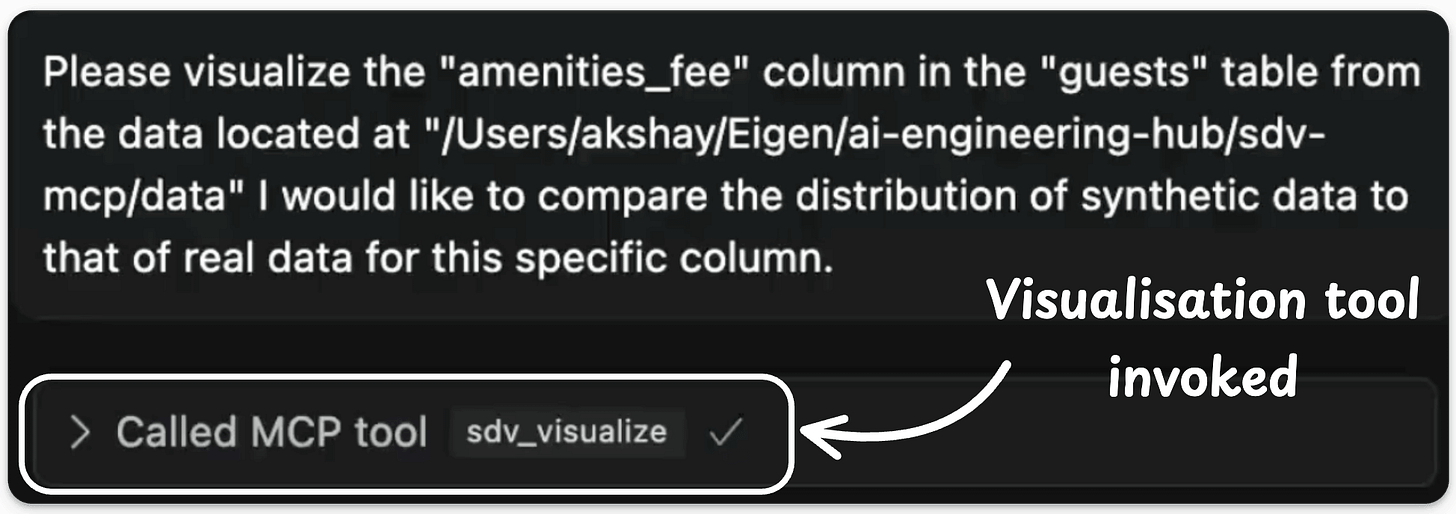
This produces a response in the chat stating that it has created a plot successfully:
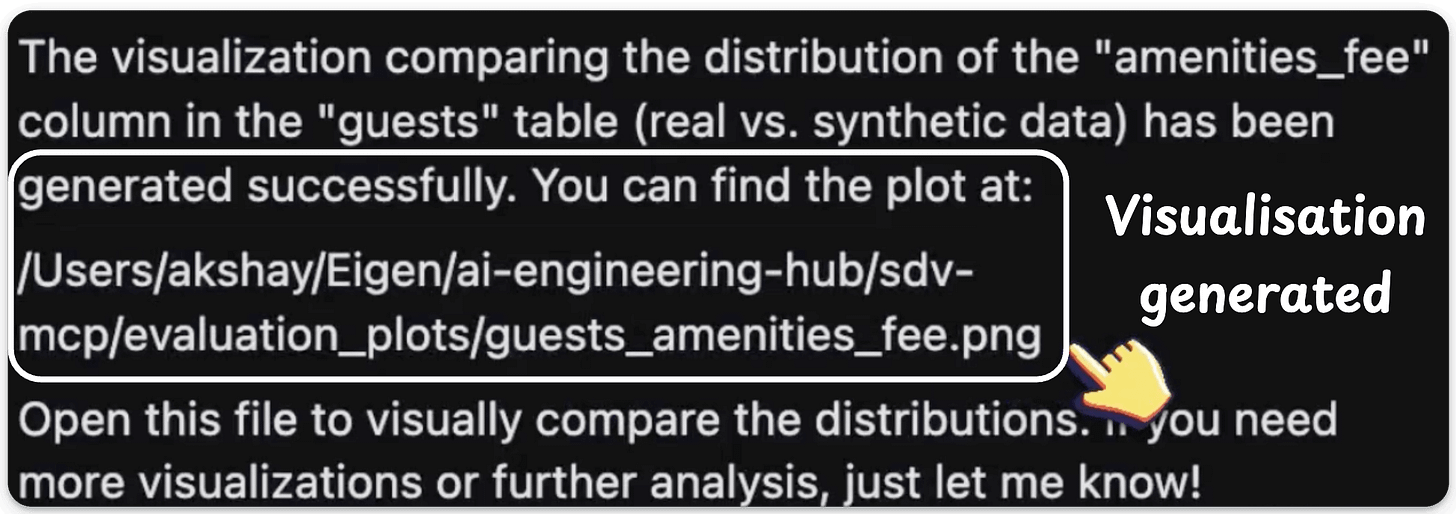
And finally, we have the following plot generated by SDV:
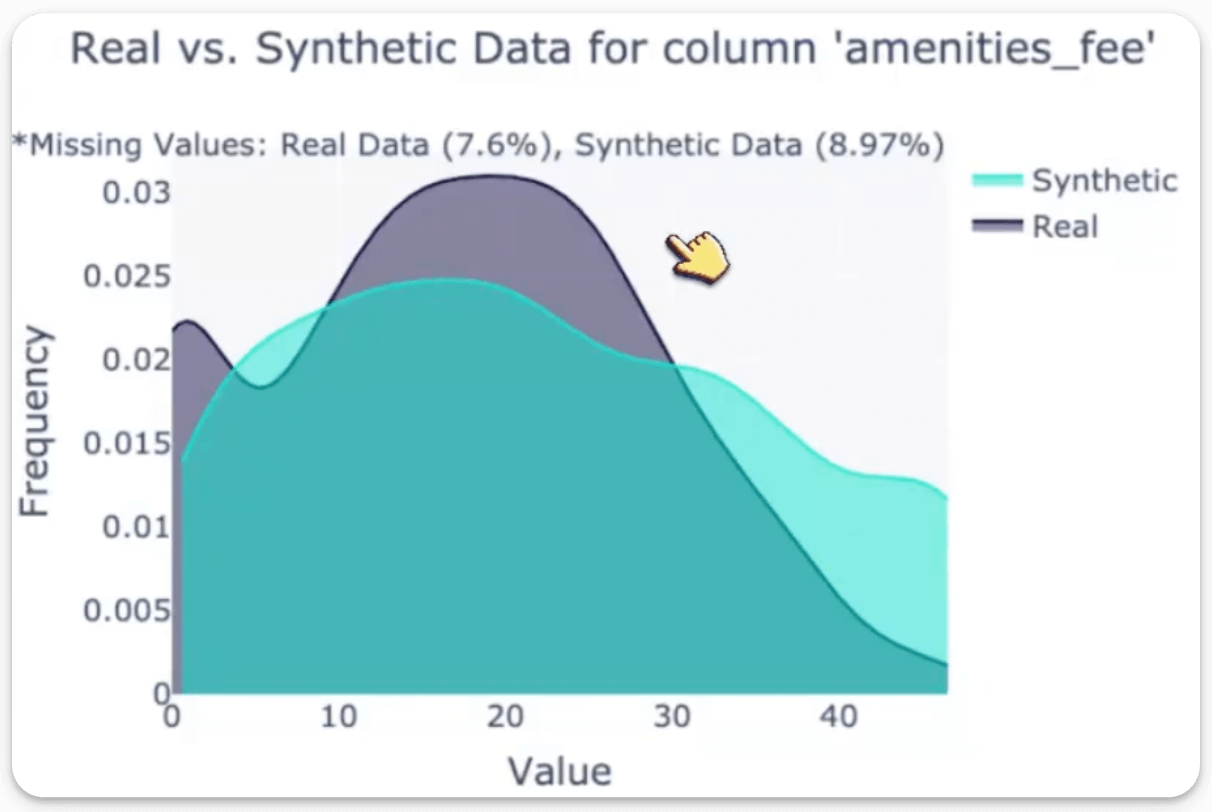
Perfect!
We have personally worked on several such synthetic data generation use cases and understand its utility in the industry. That is why we mentioned earlier that this is an MCP server that every data scientist will love to have.
If you're dealing with data scarcity or class imbalance, SDV makes it effortless to generate high-quality synthetic data.
Just point it to your dataset folder, and it handles everything from generation to evaluation, right from your IDE, hands-free.
Find the SDV GitHub repo here →
GitHub the GitHub repo with the code here →
Thanks for reading!
ROADMAP
From local ML to production ML
Once a model has been trained, we move to productionizing and deploying it.
If ideas related to production and deployment intimidate you, here’s a quick roadmap for you to upskill (assuming you know how to train a model):
- First, you would have to compress the model and productionize it. Read these guides:
- Reduce their size with Model Compression techniques.
- Supercharge PyTorch Models With TorchScript.
- If you use sklearn, learn how to optimize them with tensor operations.
- Next, you move to deployment. Here’s a beginner-friendly hands-on guide that teaches you how to deploy a model, manage dependencies, set up model registry, etc.
- Although you would have tested the model locally, it is still wise to test it in production. There are risk-free (or low-risk) methods to do that. Learn what they are and how to implement them here.
This roadmap should set you up pretty well, even if you have NEVER deployed a single model before since everything is practical and implementation-driven.
THAT'S A WRAP
No-Fluff Industry ML resources to
Succeed in DS/ML roles

At the end of the day, all businesses care about impact. That’s it!
- Can you reduce costs?
- Drive revenue?
- Can you scale ML models?
- Predict trends before they happen?
We have discussed several other topics (with implementations) in the past that align with such topics.
Here are some of them:
- Learn sophisticated graph architectures and how to train them on graph data in this crash course.
- So many real-world NLP systems rely on pairwise context scoring. Learn scalable approaches here.
- Run large models on small devices using Quantization techniques.
- Learn how to generate prediction intervals or sets with strong statistical guarantees for increasing trust using Conformal Predictions.
- Learn how to identify causal relationships and answer business questions using causal inference in this crash course.
- Learn how to scale and implement ML model training in this practical guide.
- Learn 5 techniques with implementation to reliably test ML models in production.
- Learn how to build and implement privacy-first ML systems using Federated Learning.
- Learn 6 techniques with implementation to compress ML models.
All these resources will help you cultivate key skills that businesses and companies care about the most.
SPONSOR US
Advertise to 600k+ data professionals
Our newsletter puts your products and services directly in front of an audience that matters — thousands of leaders, senior data scientists, machine learning engineers, data analysts, etc., around the world.






